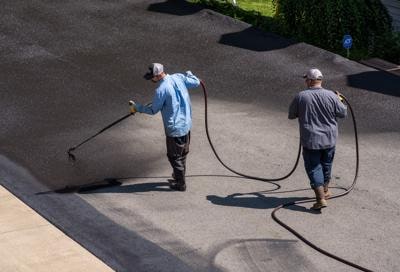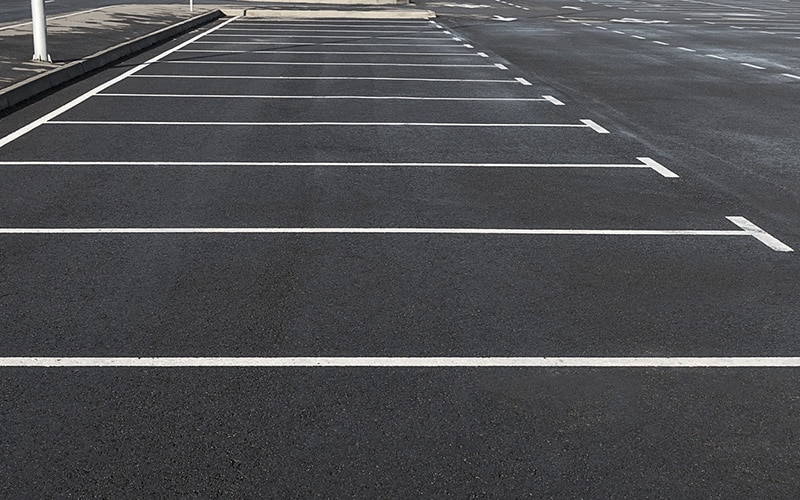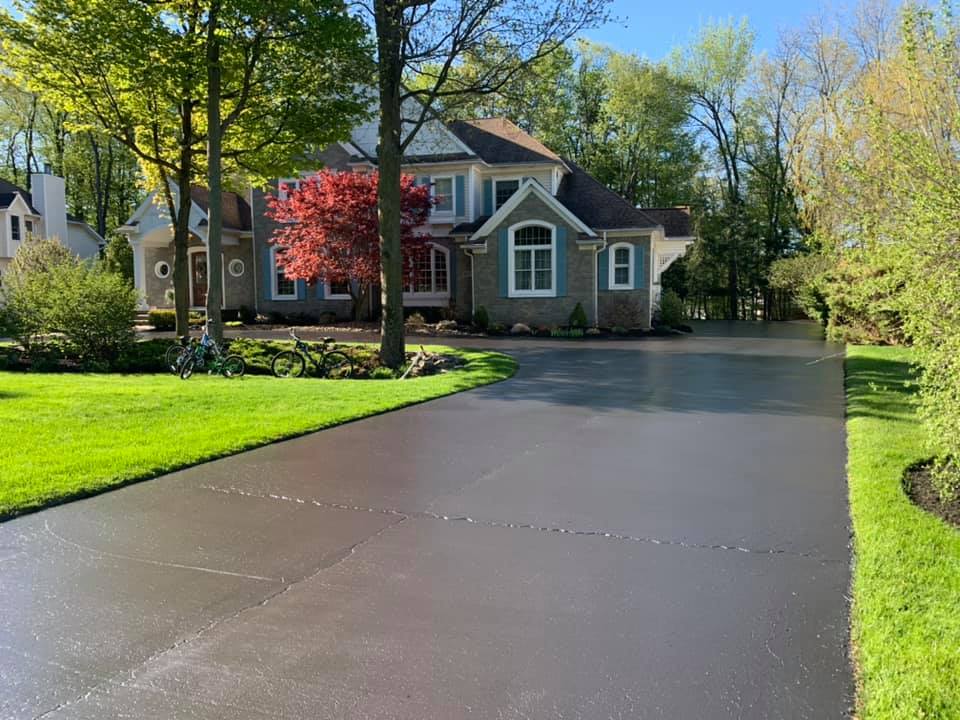Unlock the Keys of Asphalt Sealing: Making Best Use Of Hot Mix Asphalt Durability
Unlock the Keys of Asphalt Sealing: Making Best Use Of Hot Mix Asphalt Durability
Blog Article
Warm Mix Asphalt: A Lasting Service for Pavement
Warm Mix Asphalt (HMA) has actually emerged as a leading lasting choice for sidewalk remedies, supplying a myriad of environmental advantages and innovative modern technologies. As the demand for green building and construction techniques expands, exploring the nuances of HMA's sustainability can offer useful understandings into the future of sidewalk solutions.
Environmental Benefits of Hot Mix Asphalt

In Addition, Warm Mix Asphalt aids to minimize metropolitan warm island effects. Its dark color takes in sunlight, minimizing the quantity of heat showed back into the environment compared to lighter-colored sidewalks. This can reduce ambient temperatures in metropolitan locations, lowering the demand for a/c and inevitably decreasing power usage.
Furthermore, Hot Mix Asphalt adds to boosted stormwater management. Its porous nature allows water to charge and penetrate the pavement groundwater materials, reducing runoff and the danger of flooding. These environmental benefits make Hot Mix Asphalt a lasting selection for leading highways and roadways.
Power Efficiency in HMA Production
Is energy effectiveness a vital consider the production of Hot Mix Asphalt (HMA)? Absolutely. Energy plays a significant duty in the production of HMA, influencing both price and environmental sustainability. One crucial element of power efficiency in HMA manufacturing is the usage of warm mix asphalt (WMA) innovations (regrading). WMA permits the blending and placement of asphalt at lower temperature levels compared to typical hot mix asphalt, causing minimized energy consumption during manufacturing. This procedure not just decreases fuel use but additionally reduces greenhouse gas discharges, making it a much more eco-friendly alternative.
In addition, developments in plant innovations have actually led to even more energy-efficient HMA production procedures. By optimizing power use in HMA manufacturing, the market can reduce its carbon footprint while preserving high-grade pavement materials.
Recyclability of Hot Mix Asphalt
The recyclability of Warm Mix Asphalt (HMA) is a critical facet of its sustainability and lasting ecological influence. HMA is just one of one of the most recycled products in the United States, with over 100 million lots of recovered asphalt sidewalk (RAP) being reused each year in new pavement building and construction. Reusing HMA uses several environmental benefits, such as minimizing the requirement for virgin materials, reducing energy consumption i loved this during manufacturing, and lowering the quantity of waste sent out to landfills.
The procedure of reusing HMA entails milling the existing pavement, crushing it into smaller sized items, and blending it with brand-new accumulation and asphalt binder to create a recycled mix. This recycled mix can typically do in addition to and even much better than conventional HMA, while calling for fewer basic materials and generating lower greenhouse gas discharges. By incorporating RAP right into brand-new sidewalk tasks, roadway companies can preserve natural deposits, decrease costs, and decrease the environmental footprint of roadway construction and maintenance tasks. In general, the recyclability of HMA plays a significant role in promoting lasting practices within the sidewalk industry.

Long-Term Efficiency of HMA
Asphalt sidewalks show longevity and durability over a prolonged duration, mirroring the long-lasting efficiency of Warm Mix Asphalt (HMA) Additionally, advancements in HMA innovation, such as the use of polymer-modified binders and warm mix asphalt, have actually better boosted the this longevity and longevity of HMA sidewalks. By focusing on quality building and construction and maintenance practices, HMA continues to show itself as a sustainable and affordable service for long-lasting pavement facilities.

HMA: Longevity and Sustainability
Demonstrating both resilience and sustainability, Warm Mix Asphalt (HMA) has ended up being a cornerstone in the construction of long-lasting sidewalk infrastructures - commercial parking lot paving. HMA's toughness comes from its capacity to stand up to heavy tons, harsh weather condition conditions, and high web traffic quantities, making it a trustworthy option for roads, freeways, and flight terminal paths. The make-up of HMA, which usually consists of aggregates, binder, and filler, plays a critical function in improving its durability and resistance to damage
Moreover, HMA's sustainability lies in its recyclability and energy-efficient production process. The ability to recycle reclaimed asphalt pavement (RAP) in new HMA mixtures reduces the need for virgin products and decreases the ecological effect of pavement building and construction and upkeep. Additionally, the power performance of creating HMA depends on its lower mixing temperature levels contrasted to various other sidewalk products, causing reduced energy consumption and greenhouse gas emissions.
Verdict
To conclude, warm mix asphalt (HMA) supplies a lasting remedy for pavement with its eco friendly qualities. HMA's recyclability, energy effectiveness in production, and long-term sturdiness make it an environment-friendly selection for roadway construction. By saving all-natural resources, minimizing waste, and decreasing greenhouse gas exhausts, HMA plays a critical function in promoting sustainability in framework growth. Its ability to mitigate city warm island effects better emphasizes its value in producing eco aware and durable pavement systems.
HMA is one of the most recycled materials in the United States, with over 100 million bunches of recovered asphalt pavement (RAP) being recycled annually in brand-new sidewalk construction.The procedure of recycling HMA entails grating the existing sidewalk, crushing it into smaller items, and mixing it with brand-new aggregate and asphalt binder to develop a recycled mix.Asphalt pavements show sturdiness and strength over an extended duration, reflecting the long-lasting performance of Hot Mix Asphalt Go Here (HMA) In addition, developments in HMA technology, such as the use of polymer-modified binders and warm mix asphalt, have better enhanced the longevity and long life of HMA sidewalks. The capability to recycle redeemed asphalt pavement (RAP) in new HMA combinations reduces the need for virgin products and lessens the environmental effect of sidewalk building and upkeep.
Report this page